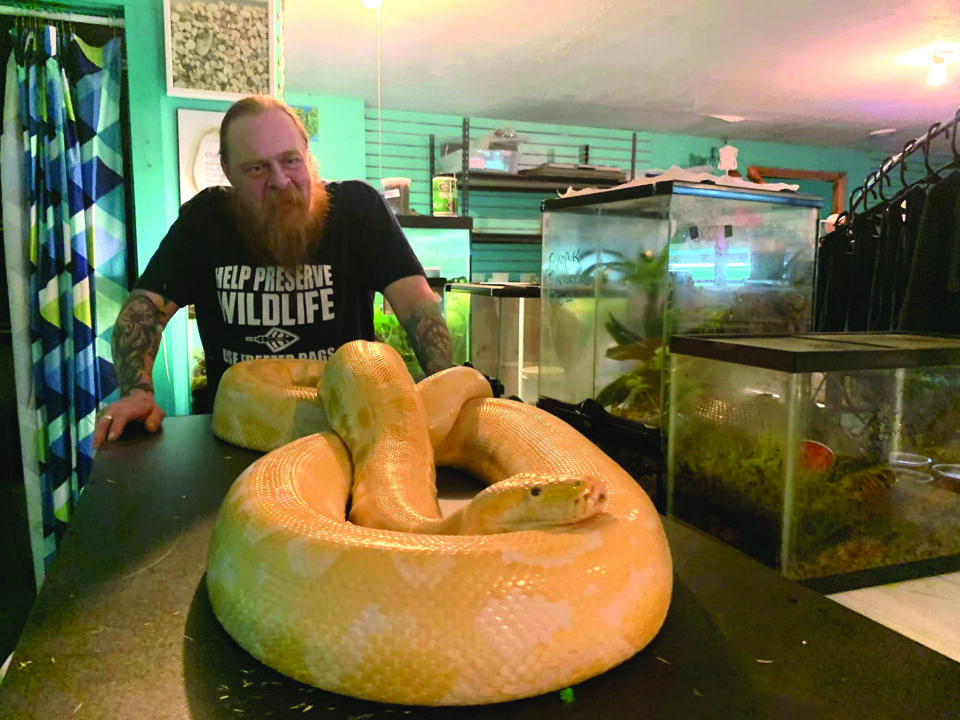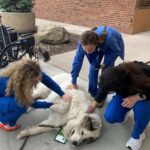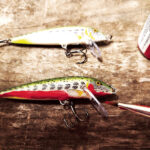Herpetoculture in the Northland
When you think of house pets, what comes to mind? Dogs and cats are in the picture, of course, probably followed by hamsters, rabbits, fish, and maybe a few birds, but have you considered… snakes? What about colorful poison dart frogs? Maybe a fuzzy tarantula? Many unusual animals have become available through captive breeding efforts in recent years, and cold-blooded creatures are now more common in households than ever.
The keeping of reptiles and amphibians (collectively ‘herps’) in captivity is called herpetoculture, a growing and thriving hobby industry where education, conservation, and pet keeping meet. If you’d like to learn more about these incredible creatures, take a drive to The Snake Pit in Hermantown and talk to the owner, Roger Hill.
Born and raised in the Duluth area, Hill has an affinity for misunderstood animals. “I’ve just always been drawn to them,” he says. Reptiles are fascinating creatures, and keeping one often leads to the desire for more. “After owning my first snake I was obsessed with the idea of breeding them,” Hill says. “First snakes I ever hatched were kingsnakes.”
Hill registered his business 31 years ago, and he’s been established in his current location below World of Fish for more than five years. Hill’s shop sells a wide variety of cold-blooded critters, including snakes, geckos, frogs, axolotls, tarantulas, isopods, other invertebrates and live feeder insects, frozen feeders, reptile supplies, and merchandise.
Unlike chain pet stores that source animals from large commercial breeders, many of Hill’s animals are hand raised. “Snakes and poison dart frogs are bred by myself or at our store,” he said.
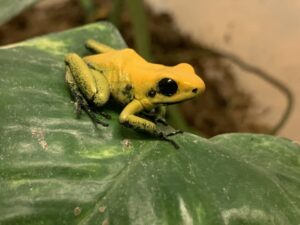
Hill does far more than breed and sell reptiles, however: He wants people to understand and appreciate them for the fascinating animals they are. When asked how his business has changed over the years, he replied, “The focus has not changed at all; it’s all about educating the kids.”
The Center for Amphibian and Reptile Education, or C.A.R.E, is the part of his business centered on bridging the gap between people and these often misunderstood and maligned creatures. Hill enjoys giving presentations at local schools, where kids light up at the chance to hold a snake, pet a tortoise or play with hissing cockroaches. The fun isn’t restricted to kids, either—anyone can book an animal encounter and learn hands on. These educational and entertaining sessions can be hosted in store, or Hill and his staff will bring the animals to your location—perfect for birthday parties and other celebrations.
Some animal ambassadors you can meet include Milo the redfoot tortoise, Pugsley the Asian water monitor, Spudnik the northern blue-tongued skink, Penelope the alligator snapping turtle, Wally Gator the alligator, and Sunshine, a large and friendly Burmese python. When asked about the resident animals, Hill replied, “Some shop pets have been brought here after friends passed away.” Many reptiles live a very long time when well cared for, with some snakes reaching 20-40 years, and tortoises often see 100 and beyond. The oldest living land animal known is a 191+ year-old Seychelles giant tortoise named Jonathan.
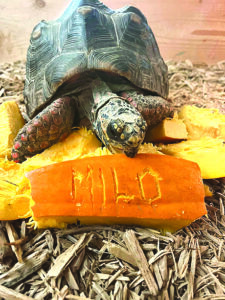
One common concern when it comes to keeping reptiles as pets is the controversy surrounding wild caught animals. “That’s a touchy one for many,” Hill said. It is illegal to catch and keep most reptiles and amphibians in Minnesota without a permit, but it is legal to import many exotic species for sale. Unfortunately, wild caught animals are often stressed and sick with parasites, so average pet keepers should stick to captive bred and born herps like those found at The Snake Pit. However, imports do have their place, Hill said: “If it were not for wild collection in some cases, the animals would no longer exist.” Habitat loss due to farming and industry is a primary reason many reptiles and amphibians are disappearing, but conservation efforts paired with captive breeding could potentially revive or at least preserve species for future generations to learn from.
Another important part of Hill’s work is reptile rescue, specifically for one of the most neglected pets in herpetoculture—turtles. Baby turtles used to be available cheaply as novelty pets and were often neglected or abandoned when they quickly grew out of their tiny starter homes. Hill’s Turtle and Tortoise SHELLter Minnesota wants to help these misunderstood animals find new lives. The organization is made possible through donations.
Reptiles have unique diets and housing needs compared to traditional mammal pets, often requiring heat sources and sometimes special lighting to thrive. It’s considered good practice to set up your enclosure before you bring your new reptile or amphibian friend home. This can be an intimidating learning curve, but it’s not as complicated as you might think. Hill and his staff are happy to help you get started and can answer any questions you have along the way.
Even if you’re not looking to bring a new pet home, stop by The Snake Pit and have a look around. Seeing the animals up close fosters an appreciation that can’t be felt through photos and video. “Many animals can be interacted with,” Hill says. “Book an encounter today.” Learn more at: facebook.com/thesnakepitrogerhill.


